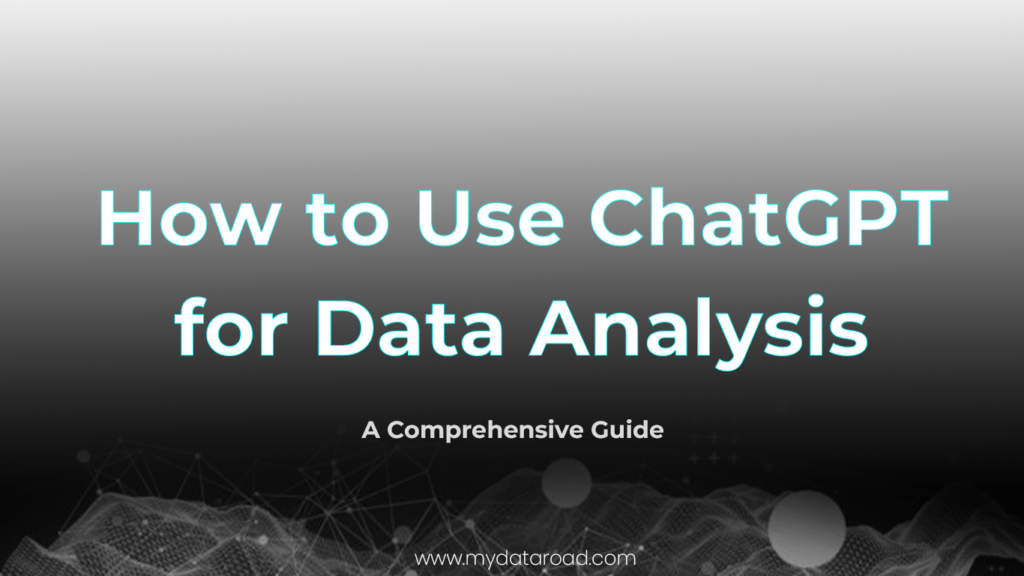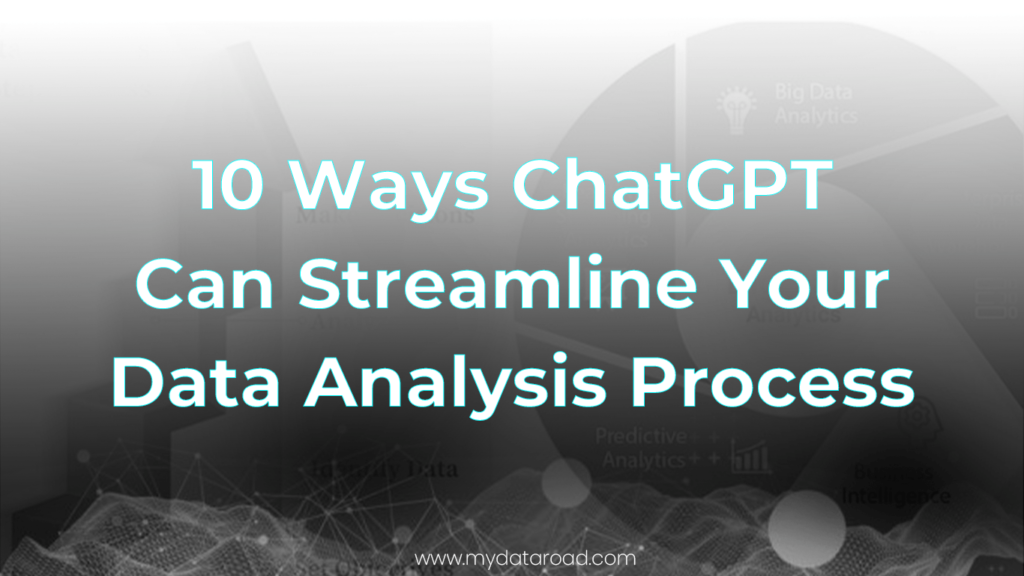How to Use ChatGPT for Data Analysis: A Comprehensive Guide
In the world of data science, the ability to turn raw data into actionable insights is crucial for driving business success. However, many data scientists struggle with the process of transforming their ideas into tangible results. This is where ChatGPT comes in. As a language model trained by OpenAI, ChatGPT can assist data scientists in generating code and providing guidance for various data analysis tasks. In this comprehensive guide, we will explore the power of ChatGPT for data science projects and learn how to effectively use it for analyzing data.
Setting Up ChatGPT for Data Science Projects
Before diving into the specifics of using ChatGPT for data analysis, it’s important to set up the environment properly. By following a few simple steps, you can ensure that ChatGPT is ready to assist you in your data science journey.
Step 1: Familiarize Yourself with ChatGPT
To begin, it’s essential to understand what ChatGPT is and how it can benefit your data science projects. ChatGPT is a powerful language model that can generate code and provide insights based on prompts given to it. By leveraging ChatGPT, you can streamline your data analysis workflow and save valuable time.
Step 2: Install the Necessary Tools
To use ChatGPT effectively, you’ll need to install the required tools and libraries. Ensure that you have Python installed, as well as any additional libraries or packages that may be necessary for your specific data analysis tasks.
Step 3: Prepare Your Data
Before using ChatGPT for data analysis, it’s important to have your data ready. This involves cleaning and preprocessing your data to ensure its quality and compatibility with the analysis tasks you have in mind. Data cleaning is a critical step in the data analysis process, as it helps eliminate errors and inconsistencies that can affect the accuracy of your results.
Generating Prompts for Data Analysis
Once you have set up ChatGPT, the next step is to generate prompts that will guide the model in providing the desired insights and analysis. Crafting effective prompts is key to obtaining accurate and relevant results from ChatGPT.
Here are some tips for generating prompts for your data analysis tasks:
- Clearly Define Your Objective: Before formulating your prompt, it’s essential to have a clear understanding of what you want to achieve with your data analysis. Clearly define your objectives and the specific insights you are seeking to obtain.
- Provide Context: When formulating your prompt, provide relevant context about the dataset you are working with. Include details such as the number of rows and columns, the variables included, and any specific characteristics of the data that are important for your analysis.
- Specify the Analysis Task: Clearly state the analysis task you want ChatGPT to perform. Whether it’s exploratory data analysis, model training, or report generation, providing a specific task will help ChatGPT generate more accurate and relevant responses.
- Consider Class Imbalance and Goal: If your data analysis task involves classification, make sure to address any class imbalance issues and specify the goal. For example, if you are analyzing a loan dataset, mention that the goal is to accurately predict whether a loan will not be paid back.
- Mention Tools and Deployment Considerations: If you have specific requirements regarding the tools or platforms to be used for your analysis, include them in your prompt. For example, if you want to build a web app using Gradio and deploy it on Huggingface Spaces, mention these details in your prompt.
Example: Using ChatGPT for an End-to-End Data Science Project
To illustrate how ChatGPT can be used for data analysis, let’s walk through an example of using ChatGPT for an end-to-end data science project. For this example, we will be working with a loan dataset from DataCamp Workspace. Our goal is to develop a portfolio project that accurately predicts whether a loan will not be paid back.
1. Project Planning:
- Initiate a new chat with ChatGPT and mention the loan dataset.
- Ask ChatGPT to provide steps for building an end-to-end portfolio project.
2. Refine the Prompt:
- Update the prompt to include class imbalance issues and specify the goal of predicting “loan not paid back.”
- Mention that model monitoring will not be required.
3. Generate Steps:
- ChatGPT will provide a list of steps, which can be refined and expanded based on your specific project requirements.

By following the steps provided by ChatGPT, you can build an end-to-end data science project using the loan dataset. Remember to adapt and modify the steps based on your specific project requirements and goals.
Experimenting with ChatGPT for Data Analysis
To further demonstrate the capabilities of ChatGPT for data analysis, let’s explore a real-world experiment.
In this experiment, we will use the Black Friday Sales dataset and challenge ChatGPT to generate code for building a machine learning model.
Experiment 1: Code Generation for Machine Learning Model:
- Download the Black Friday Sales dataset.
- Initiate a chat with ChatGPT and ask for code to build a machine learning model on the dataset.
- Evaluate the generated code in a Jupyter notebook to determine its accuracy and effectiveness.
Experiment 2: Redesigning Prompts for Desired Outcomes:
- Based on the learnings from Experiment 1, refine and redesign prompts to achieve more accurate and desired outcomes.
- Evaluate the revised prompts and assess the improvements in the generated code.
Through these experiments, you can see firsthand how ChatGPT can assist in generating code and providing insights for your data analysis tasks. By refining and iterating the prompts, you can achieve more accurate and relevant results.
How to use ChatGPT for Data Analysis: FAQs
1. What exactly is ChatGPT and how does it assist in data analysis?
ChatGPT is an advanced language model developed by OpenAI. In data analysis, it can assist by generating code, providing insights based on prompts given, and helping streamline your workflow.
2. How do I install Python and other necessary tools or libraries for using ChatGPT in data analysis?
To install Python, you can download it from the official website. For other libraries like pandas or numpy, you can install them using pip, Python’s package installer, with commands like ‘pip install pandas’.
3. What steps should I take to clean and preprocess my data before using it for analysis with ChatGPT?
Cleaning and preprocessing data involves removing duplicates, handling missing values, and ensuring data types are correct. Tools like pandas in Python can help with these tasks.
4. How do I generate effective prompts for data analysis with ChatGPT? What makes a prompt effective?
An effective prompt for ChatGPT clearly defines the analysis objective, provides context about the dataset, and specifies the analysis task. The more specific and clear your prompt, the better the model’s response will be.
5. What is meant by “class imbalance” and how does it impact my data analysis tasks?
Class imbalance refers to a situation where the classes in a classification problem are not represented equally. It can lead to misleading accuracy in models, so techniques like resampling or using different metrics can help address it.
6. Can you provide an example of how to use ChatGPT for a specific end-to-end data science project?
As per the blog post, an example of using ChatGPT for an end-to-end project might include planning the project, refining the prompts to include specific goals and considerations, and then generating a step-by-step guide using ChatGPT.
How can I experiment with ChatGPT to refine my prompts for more accurate results in data analysis?
To experiment with ChatGPT, you can start by generating code for a specific task, evaluate its effectiveness, and then refine your prompts based on the outcomes. This process can be repeated until you achieve desired results.
Conclusion
In conclusion, ChatGPT proves to be a valuable tool for data scientists looking to streamline their data analysis process. By properly setting up ChatGPT and generating effective prompts, you can leverage its power to generate code, provide insights, and drive your data analysis projects forward. Experimenting with ChatGPT allows you to refine and improve your prompts, resulting in more accurate and desired outcomes. Embrace the potential of ChatGPT and unlock its capabilities for your data analysis endeavors. Happy analyzing!
Additional Information:
Remember, data cleaning is like peeling an onion – it may bring tears to your eyes, but it’s essential for revealing the true insights hidden within your data. Take the time to thoroughly clean and preprocess your data before diving into analysis with ChatGPT. This will ensure the accuracy and reliability of your results, setting you up for success in your data analysis journey.
What you should know:
- Our Mission is to Help you to Become a Professional Data Analyst.
- This Website is a Home for Data Analysts. Get our latest in-depth Data Analysis and Artificial Intelligence Lessons and Updates in your Inbox.

Tech Writer | Data Analyst | Digital Creator



